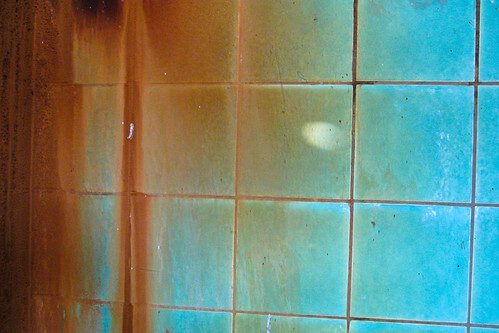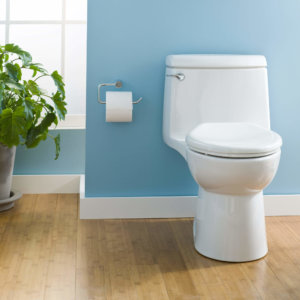How to Remove Rust from Bathroom Fixtures
In most homes, at least a few metal parts rust over time. When ferrous or iron-based metals are exposed to air, they often turn a familiar red-orange color. This chemical reaction can weaken the metal and cause issues with your bathroom fixtures. Preventing rust can help your fixtures last longer by preventing damage. It can also make your house more appealing to guests and potential future buyers. If you already have rust, you should remove it quickly, before it can spread. Here’s some more information about the causes of rust, what you can do to prevent it, and how to remove it.
The Causes of Rust on Bathroom Fixtures

Rust can have a variety of causes. If you see rust stains on your porcelain bathtub or sink, they’re likely from metal objects like cans of shaving cream or razors that you keep nearby. Rust often forms in places with hard water, and it can seep into wells or pipes in or near your Chicago, Illinois, home.
Many bathroom fixtures have chrome or brushed nickel plating to make them look shiny and protect them from rust. The plating also makes the metal surface harder and prevents a lot of wear. Two types of chrome plating are common. Hard chrome-plated surfaces are usually thicker, and they protect the outside of fixtures like faucets. Thin dense chrome plating is usually used on the interiors of surfaces to increase smoothness and uniformity and reduce metal fatigue.
Unfortunately, with either type of chrome plating, small scratches or dents in your chrome fixtures can expose the metal underneath to oxygen and moisture, which can eventually form rust, especially in the moist environment of a bathroom. Water with a brown or red-orange color is a common sign you have rust in your pipes. You could also notice a clog or a sink that’s slow to drain because of rust buildup. If only your hot water is discolored, you may need a new hot water tank.
Correct this problem quickly to keep the excess iron from leaching moisture from your skin and hair or staining it when you shower. You could develop dry skin, hair with a reddish tint, clogged pores and acne, or stained clothing. The rusty water could make the food you cook taste bitter as well. If you notice rusty water, contact a plumber who can find the problem and help you replace any pipes needed to correct it.
How to Prevent Rust from Bathroom Fixtures
To prevent rust, wipe off your bathroom fixtures with a towel every time you finish using them. That way, water won’t have a chance to sit on surfaces and eventually lead to corrosion. Cleaning your bathroom often with cleaning products widely available in stores can help remove any rust before it becomes noticeable or builds up and becomes difficult to get rid of.
Cleaning also removes dirt and water spots, letting you identify any rusty areas more easily. However, you shouldn’t leave any product in contact with your bathroom fixtures for more than about 10 minutes. Otherwise, it could cause permanent damage instead of just removing rust.
You can also keep rust from forming by adding a rust-resistant metal primer to your bathroom fixtures. Before you start painting, sand your fixtures while wearing a dust mask to protect yourself from chrome dust. Start with heavy sandpaper, and then use a finer variety. This helps the primer adhere to the chrome, and it can help you remove scratches.
Wipe down the chrome with a wet rag before starting the primer application, and fill any cracks or deep gouges with a liquid metal filler. Let it dry according to the instructions, and then use the primer. After the primer, apply a finish coat with automotive enamel or acrylic or latex metal paint. For a quicker way to prevent rust, seal any cracks in fixtures with car wax every month or two.
Installing a water softener can help you stop rust at its source by removing iron from your water. It uses a process called ion exchange to get rid of iron and many other heavy metals. If the iron levels in your water are very high, you may need to add an iron filter. A water softener can’t remove every bit of iron, so you should still clean your fixtures regularly and watch for any discolorations. Water softeners can also help prevent water spots on your dishes and make your water smell and taste better.
How to Remove Rust from Bathroom Fixtures
You can use several substances to remove rust. White vinegar can help dissolve rust if you spray it on, let it sit for about 10 minutes, and then scrub it with a sponge. You can also use a paste made from baking soda and water or lemon juice. It doesn’t drip away as quickly as white vinegar, so it’s especially effective when you let it sit on the stain for a while.
The carbonic acid in soda can help dissolve rust as well. For large or stubborn rust spots, use steel wool, a pumice stone, or a ball of aluminum foil to scrub. If you have a particularly large rust spot on one of your bathroom fixtures, replacing the fixture may be easier than trying to remove the stain. If you switch to stainless steel fixtures, you won’t need to worry as much about rust.
Stainless steel is also resistant to scratches. However, you could eventually see rust or wear even with this durable material. In most cases, you can remove it by using a bathroom cleaner, wiping it off with a wet cloth, and then using a glass cleaner to get smaller particles. Finishing with a metal polish can help you prevent rust in the future.
For a new faucet, vanity, sink, toilet, tub, or other bathroom fixture, contact Allied Plumbing & Heating Supply of Chicago. We offer an extensive selection, and we can help you choose the best accessories for your bathroom. Our family-owned business has been open for more than 30 years. We’re open on weekdays from 7:30 a.m. to 5 p.m., and we close at 2 p.m. on Saturdays.
Image via Flickr under CC BY 2.0 by darkbuffet

